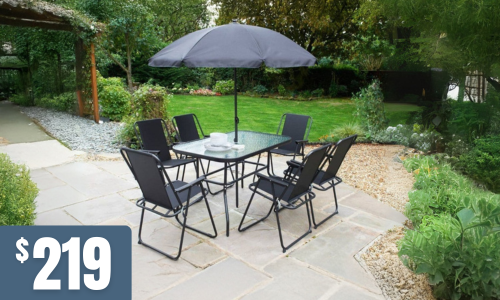Posts tagged with 'minimalist design'

Design trends may come and go, but a timeless living room remains effortlessly stylish throughout the years. By combining thoughtful elements and classic design principles, you can create a space that stands the test of time. Here's a guide to help you curate a living room that never goes out of style.
Invest in Quality Furniture
Quality over quantity is a key principle for timeless design. Opt for well-crafted pieces made from enduring materials like solid wood, leather, or high-performance fabrics. These items not only last longer but develop unique character as they age, making them even more beautiful over time. Choosing well-made furniture also reduces the need for frequent replacements, making it both an aesthetic and practical investment.
By creating a solid foundation with classic, durable furniture, your living space gains an effortlessly elegant and lasting appeal.
Pro Tip: Choose neutral tones for your larger furniture items to maintain flexibility when updating decor.
Stick to a Neutral Colour Palette
Neutral shades such as white, beige, grey, and earthy tones provide a versatile backdrop for your living room. They create a calm and balanced atmosphere while effortlessly complementing various design elements.
What makes this approach effective is the ability of neutral colours to act as timeless canvases. These shades allow you to experiment with changing trends by simply swapping accent pieces like cushions and throws, rather than redoing the entire room.
Pro Tip: Add depth to your neutral palette by layering textures, such as a woven rug, plush cushions, or linen drapes.
Incorporate Statement Pieces Thoughtfully
While keeping the core design classic, incorporating a single statement piece can elevate your living room. This could be a bold armchair, a sculptural coffee table, or an oversized piece of artwork that immediately draws the eye.
A carefully chosen statement piece injects personality into the space without overwhelming it, acting as a conversation starter and focal point.
Pro Tip: Select a statement piece that aligns with your taste and can remain a focal point for years to come.
Mix Modern and Traditional Elements
Blend old and new design elements to achieve a curated, layered look. For example, pairing a sleek sofa with a vintage rug or placing a contemporary lamp on a classic wooden side table creates an intriguing contrast. This approach works by adding depth and visual interest, preventing your living room from looking one-dimensional or monotonous. The harmony between contrasting styles brings a sophisticated edge to the overall design.
Pro Tip: Focus on balance—too much of one style can disrupt the cohesion of the room.
Prioritise Comfort
A timeless living room isn’t just about aesthetics—comfort is equally important. Plush seating, soft throws, and ergonomic furniture create an inviting environment where form meets function.
Comfort-driven designs stand the test of time because they cater to human needs, making the space enjoyable for everyday living and special gatherings alike.
Pro Tip: Opt for furniture with both form and function, such as deep-seated sofas and supportive armchairs.
Keep Clutter to a Minimum
A clean and organised space never goes out of style. Minimal clutter allows your furniture and decor choices to take centre stage and helps maintain a polished look.
The beauty of uncluttered spaces lies in their ability to feel open, airy, and serene. By reducing visual noise, you create an environment where timeless design elements can truly shine.
Pro Tip: Incorporate stylish storage solutions like built-in shelves or decorative baskets.
Creating a timeless living room is about thoughtful curation and a balance between beauty and function. By investing in quality pieces, embracing neutral palettes, and maintaining comfort, you can design a space that remains stylish year after year. Ready to transform your living room? Explore our latest collection of classic yet contemporary furniture to get started.
 In a world that often appears cluttered and chaotic, the concept of minimalism has gained significant popularity. This trend extends beyond decluttering your living space; it has also found its way into the design of furniture. Minimalism in furniture is all about achieving a harmonious balance between aesthetics and functionality. In this article, we'll explore the essence of minimalism in furniture and how it can transform your living spaces.
In a world that often appears cluttered and chaotic, the concept of minimalism has gained significant popularity. This trend extends beyond decluttering your living space; it has also found its way into the design of furniture. Minimalism in furniture is all about achieving a harmonious balance between aesthetics and functionality. In this article, we'll explore the essence of minimalism in furniture and how it can transform your living spaces.
The Essence of Minimalism
Minimalism is more than just a design trend; it's a philosophy that advocates for simplicity and the elimination of unnecessary elements. It encourages you to focus on what truly matters, both in design and life. When applied to furniture, minimalism seeks to create pieces that are visually pleasing, unobtrusive, and highly functional.
Clean Lines and Simple Forms
At the heart of minimalistic furniture design are clean lines and simple forms. Furniture pieces often feature straight lines, geometric shapes, and a lack of ornate detailing. This simplicity in design allows the furniture to blend seamlessly with various interior styles and spaces.
Neutral Colour Palette
Minimalist furniture tends to favour neutral colour palettes, such as whites, greys, blacks, and earthy tones. These colours create a calming and unobtrusive atmosphere, making the space feel open and inviting. The absence of bold, attention-grabbing colours is a hallmark of minimalist design.
Quality Over Quantity
Minimalism encourages the idea of "less is more." This means that instead of cluttering your space with numerous pieces of furniture, you focus on selecting a few high-quality items that serve their purpose exceptionally well. Quality materials and craftsmanship take precedence over quantity.
Functionality as a Priority
One of the key principles of minimalistic furniture design is prioritising functionality. Minimalist pieces are designed with a purpose and often serve multiple functions. For example, a coffee table might have built-in storage or a sofa that converts into a bed. This approach maximises the utility of each piece while minimising clutter.
Multifunctional Furniture
Multifunctional furniture is a staple of minimalist design. Pieces like sofa beds, extendable dining tables, and storage ottomans are designed to make the most of your space without compromising on style. These pieces adapt to your needs, ensuring that every square inch of your home serves a purpose.
Hidden Storage Solutions
To maintain a clean and uncluttered look, minimalistic furniture often incorporates hidden storage solutions. Cabinets with sleek, push-to-open mechanisms, floating wall-mounted shelves, and beds with under-bed storage drawers are examples of how functionality seamlessly integrates with aesthetics.
Finding the Right Balance
Balancing aesthetics and functionality is the essence of minimalism in furniture design. Here are some tips for achieving this balance in your home:
- Declutter First: Before investing in minimalist furniture, declutter your space. Get rid of items you no longer need or use. This will create a clean canvas on which your new furniture can shine.
- Choose Quality Over Quantity: Invest in well-crafted, durable pieces that will stand the test of time. These pieces may have a higher upfront cost, but they are more sustainable in the long run and contribute to the overall minimalist aesthetic.
- Prioritise Versatility: Select furniture that serves multiple functions or can adapt to changing needs. This not only saves space but also adds practicality to your living areas.
- Maintain a Cohesive Colour Palette: Stick to a neutral colour palette for your furniture and decor. This creates a sense of unity and tranquillity in your home.
- Embrace Negative Space: Allow for plenty of negative space in your design. This means leaving areas of your room empty, which can be just as impactful as the furniture itself.
Minimalism in furniture design is all about achieving a delicate balance between aesthetics and functionality. By adhering to the principles of clean lines, neutral colours, and prioritising quality and functionality, you can create a space that is not only visually appealing but also highly practical. Minimalistic furniture invites you to live with intention, appreciating the beauty of simplicity in your daily life. So, take a step toward a more serene and clutter-free environment by exploring the world of minimalistic furniture design. Your home will thank you for it.
Check out our range to create your own minimalist home!




.jpeg)

 (3).jpeg)
